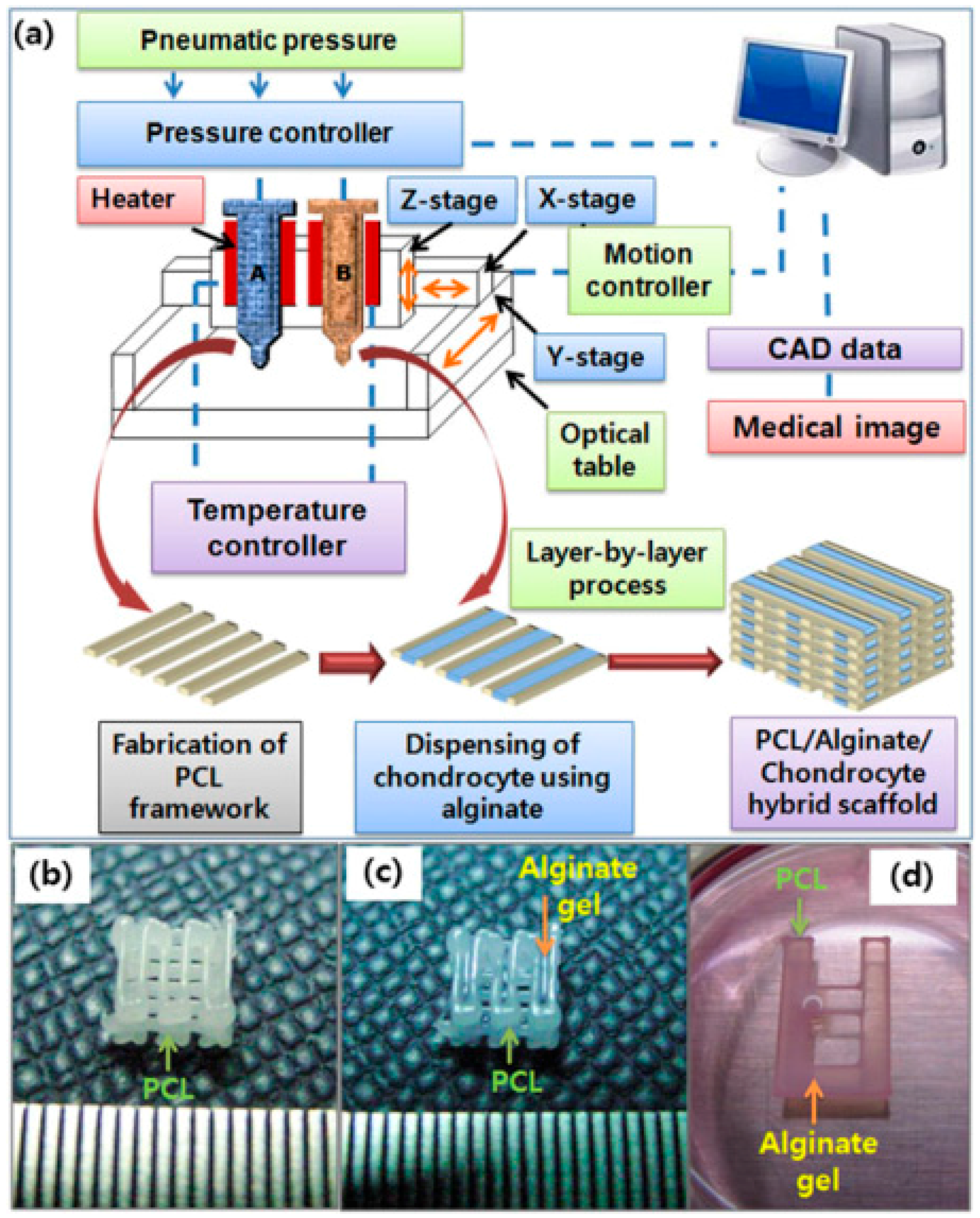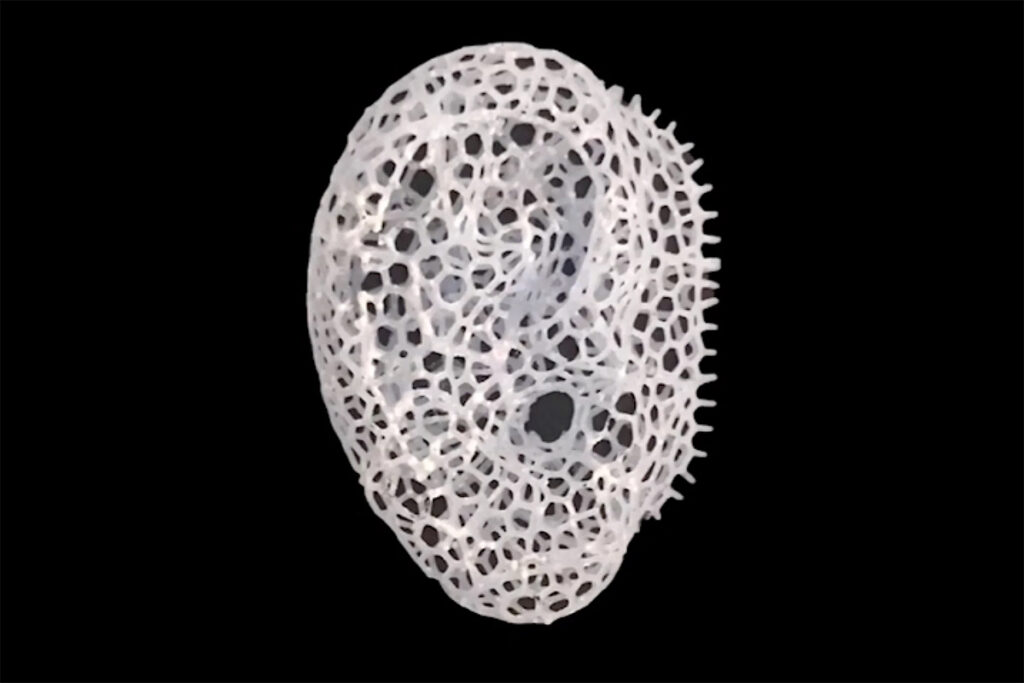

3D printing technology is an additive manufacturing technology, providing a tool for recapitulation of the vascular physiology. Besides, there are a lack of control on blood vessel geometry and organization by self-assembly and a lack of cell infiltration in scaffolds by decellularized methods. Moreover, the cross section of flow channels of scaffolds prepared by soft lithography is usually rectangular. For example, the resolution of micromolding is low, and the formed scaffolds sometimes lack cell binding sites.

Traditional manufacturing technology may fail to recapitulate the vascular physiology. Physiological structures of blood vessels in human bodies are complex, usually with heterogeneous, porous, and permeable properties. And scaffolds are completely degraded after angiogenesis. Vascular scaffolds are reconstructed by modeling and preparation to guide cell adhesion and proliferation and formation of new blood vessels. Scaffold-based tissue engineering technology provides solutions to this problem. However, vascular tissues with a given shape and function cannot be achieved by conventional autologous implantation and allograft transplantation. Demand for vascular grafts increases year by year.

Methods for vessels rebuilding include fabrication of vascular scaffolds, decellularization of vessels, fabrication of self-assembly vascular grafts and subsequent vessel maturation processes such as the utilization of vessel-reactors and introduction of culture additives. Vessels rebuilding is commonly involved in vascular regeneration, aiming to fabricate biologically functional and structural vessels from endothelial cells, smooth muscle cells, stem cells, bioactive molecules, biomaterials and corresponding cell aggregates or spheroids. Current methods for vascular regeneration consist of implantation of tissue-engineered vascular grafts, placement of stents, surgical bypass grafting, angioplasty and implantation of non-biodegradable conduits. Vascular regeneration is defined as regeneration of blood vessels to restore the structure and function of damaged tissues and organs, which is a promising method to treat these diseases. And vascular-related diseases are one of the main causes of death. Blood vessels provide channels for nutrient transport and metabolism of tissues and organs. Usually diffusion-driven nutrients and oxygen cannot be adequately obtained by cells. One of the main challenges in preparation of large-size tissues is the supply of nutrients to cells. Also, four trends of 3D printing of tissue engineering vascular scaffolds are presented, including machine learning, near-infrared photopolymerization, 4D printing, and combination of self-assembly and 3D printing-based methods. Transformation of vascular scaffolds to clinical application is discussed. And a focus is placed on preparation processes based on 3D printing technologies and traditional manufacturing technologies including casting, electrospinning, and Lego-like construction. Print materials and preparation processes are discussed in detail. Specially, significance and importance of scaffold-based tissue engineering for vascular regeneration are emphasized. This review presents state of the art on modeling methods, print materials and preparation processes for fabrication of vascular scaffolds, and discusses the advantages and application fields of each method. Recent advances in 3D printing have facilitated fabrication of vascular scaffolds, contributing to broad prospects for tissue vascularization. The demand for blood vessels prompts systematic research on fabrication strategies of vascular scaffolds for tissue engineering. Scaffold-based tissue engineering approaches are effective methods to form new blood vessel tissues. Insufficient supply of nutrients and oxygen to cells in large-scale tissues has led to the demand to prepare blood vessels. Tissue engineering is an emerging means for resolving the problems of tissue repair and organ replacement in regenerative medicine.


 0 kommentar(er)
0 kommentar(er)
